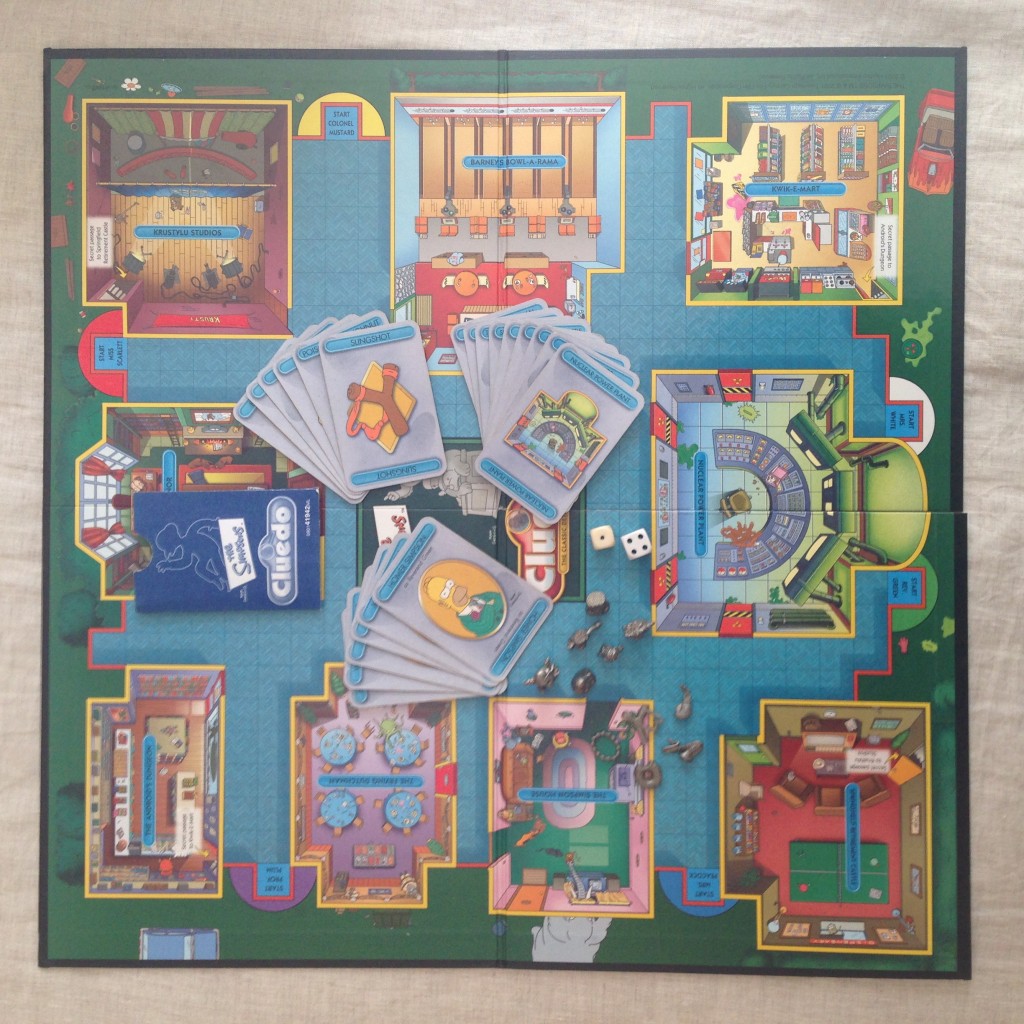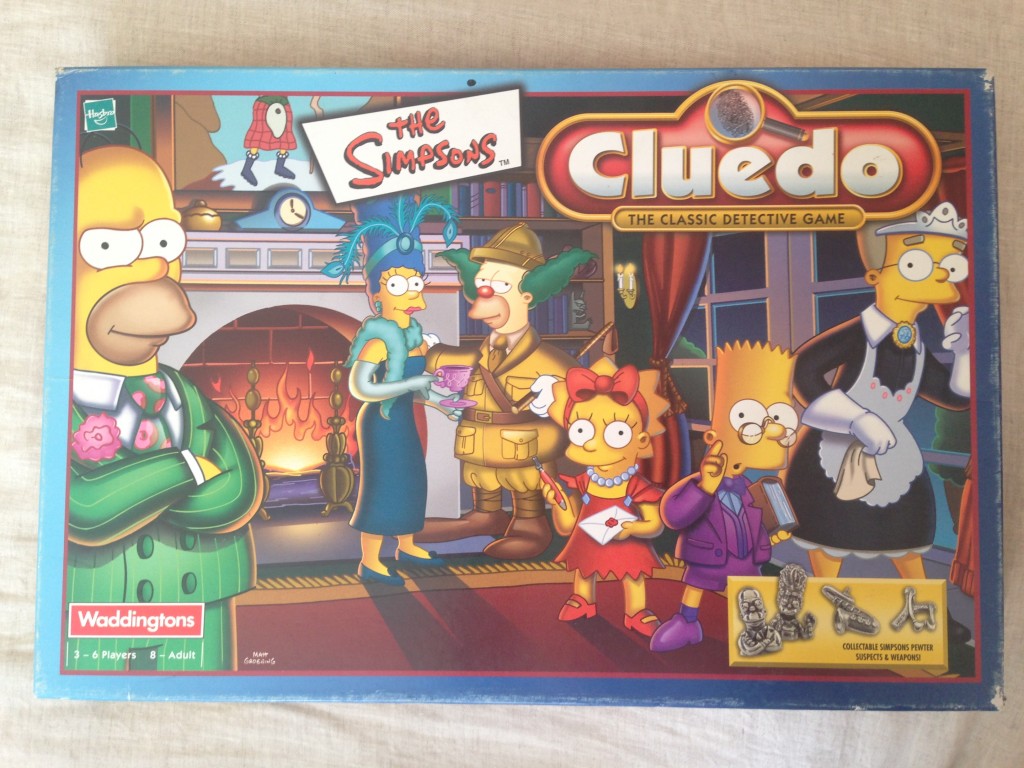For over 25 years The Simpsons has been challenging, satirising and undeniably influencing the ideologies of western society (Neuhaus 2010, pp. 761). The American animated comedy series is known for its commentary surrounding traditional western values, politics, religion, contemporary social issues and pop-culture (Neuhaus 2010). We have seen The Simpsons characters leave their town of Springfield and enter a range of other story worlds as well as welcome countless celebrities, political figures and characters onto their own show which contains a plethora of real-life references (Dowling 2014). It therefore comes as no surprise that the team behind this infamous TV show has partnered with the team behind the timeless board game Cluedo to create a game that combines two vastly different stories, the traditional and the contemporary, to ultimately produce a compelling and especially relevant artefact to examine in relation to this case study.
Before discussing the role of remixing in the creation of this game, I will first examine what makes this game a ‘story’ in its own right, as I believe that it is one of the most story-centric board games in existence today. In the second week of the course we were introduced to Manovich’s validation of story – to qualify as a narrative, a cultural object has to satisfy a number of criteria: it should contain both an actor and a narrator; the text, the story and the fabula; and it should contain a series of connected events caused or experienced by actors (Manovich, pp. 227). The Simpsons Cluedo satisfies these criteria in its involvement of character (Homer Simpson, Marge Simpson, Lisa Simpson, Bart Simpson, Krusty the Clown, Mr Smithers, Mr Burns), actors (the players), setting (Mr Burn’s manor, the Simpson’s house, the nuclear power plant, etc), themes (crime, mystery, ‘whodunit’) and purpose/algorithm (to discover who, where and how Mr Burns was murdered).
By breaking down the story elements, it is now simple to understand how The Simpsons television series and the original Cluedo board game were merged. The characters and settings have been taken from The Simpsons world while the themes and algorithm of the original game have been carried over to this new version. In combining these elements, players can engage with the classic ‘whodunit’ story of the game, which functions just as the original game does, while engaging with the familiar, modern characters from the TV show.
Where the Cluedo game is concerned, the story structure and medium remain virtually unchanged. In contrast, The Simpsons moves from the television screen to the tactile board game. We can now view the wider Simpsons franchise, as a whole, as a transmedia story. It is told across various media including the television and board game as well as a range of other platforms such as film, apps, video games, theme park attractions and comics (Sosa, slide 5). However in focusing on The Simpsons Cluedo as an individual story, the artefact remains a story told via the single medium, that of the board game.
Dowling, S 2014, ‘How The Simpsons changed TV’, BBC Culture, 17 December, viewed 14 March 2015, <http://www.bbc.com/culture/story/20141216-how-the-simpsons-changed-tv>.
Manovich, L, ‘The Database’, viewed 14 March 2015,<https://lms.rmit.edu.au/bbcswebdav/pid-6034741-dt-content-rid-12401195_1/courses/COMM2626_1510/Manovich_TheDatabase.pdf>.
Neuhaus, J 2010, ‘Marge Simpson, Blue-Haired Housewife: Defining Domesticity on The Simpsons’, The Journal of Popular Culture, vol. 43, no. 4, pp. 761–781, viewed 14 March 2015, <http://onlinelibrary.wiley.com.ezproxy.lib.rmit.edu.au/doi/10.1111/j.1540-5931.2010.00769.x/epdf>.
Sosa, R, ‘THE SIMPSONS ACROSS THE PLATFORMS AND BEYOND’, PowerPoint, viewed 14 March 2015.

